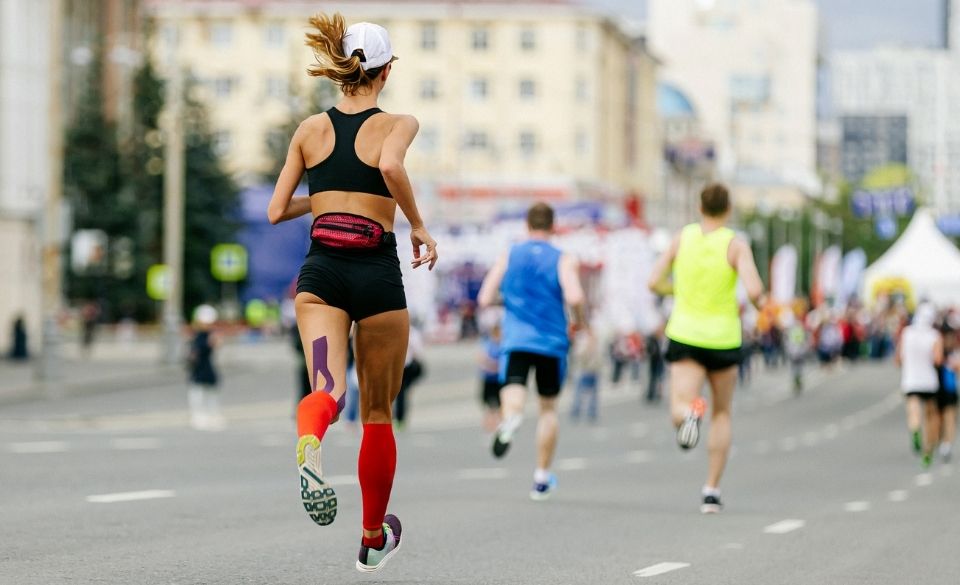
How To Increase Running Speed – Learn Ways To Run Faster
Every runner, at some point, wants to get faster. Whether this is a personal goal or to better a previous race result, humans are competitive people by nature, and to better themselves is natural.
With that said, if you want to become a faster runner, what should you do?
First, you need to learn how to increase running speed. This can be achieved through a variety of workouts (more in this article) and recovery. However, everyone is different.
In this article, we discuss how to increase your running speed through key workouts. We also discuss other ways to run faster.
So, if you want to drop your 5km, 10km, or marathon times, keep reading. Alternatively, if you just run for fun and want to improve your speed, this article is for you.
How To Increase Running Speed?
If you have been running at a steady pace or running the same course every day, it’s not uncommon for you to hit a plateau. Luckily there are many ways you can learn how to run faster without getting tired.
To run faster, you must first learn how it feels to increase your speed. That means you should first start practicing bursts of speed. This can be done by performing short efforts slightly faster than your general pace. These efforts should last anywhere from 2-5 minutes. By doing this, you can help regulate your breathing and allow the body to adjust to a faster tempo.
At first, you might feel winded or fatigued. However, if you slowly increase the duration and intensity, the heart, lungs, and legs will slowly adapt.
Once you have performed a few weeks of learning to increase the pace, you can start introducing more structured workouts.
The first workout you should do if you run more than 30 minutes at a time and more than 2-3 days a week is a tempo run.
A tempo run is a workout around your 10km pace or a pace that starts to labour your breathing. A tempo run is generally around 15-20 minutes long and is 10 secs per mile slower than your 10 km pace. If you don’t know your 10km pace, you can use a run calculator to estimate your 10km finishing time.
To do a tempo run. First, start by warming up for 5 to 10 minutes. Then start the tempo run and continue for 15-20 minutes. Alternatively, if you are a beginner, it is also ok to start with 10 minutes to get a feel for it.
Hold your pace 10 seconds slower than your 10km pace. Then finish with 5 to 10 minutes of easy running.
Once you have completed at least four weeks of tempo runs, you can start to move into more intense workouts, such as intervals, hill workouts, and sprint sessions.
The most common workout after completing 4+ weeks of tempo runs is intervals. Depending on the distance you are training for, this can vary.
For most people, intervals between 400m-1km are the best to start with. This allows you to learn how to pace correctly and practice the mental ability to complete these intense efforts.
Start by warming up for 5 to 10 minutes. Then by using your running watch or a marked course, run the 800m or 1km slightly faster than your 5 km race pace. Like the tempo run, if you don’t know your 5km time, use a running calculator to get a close estimate.
Stick to 3-4 repetitions if you are starting out. Then each week increase the number of efforts by one. Then walk easy or jog slowly for 2 minutes between each interval.
With these types of intervals start with 3 if you are a beginner and 4 to 5 if you are more experienced. Remember you can always increase the number of efforts each week. Alternatively, instead of increasing the number of repetitions, you can reduce the recovery time down to 1 minute.
Ways To Run Faster?
If intervals or tempo runs aren’t your thing, there are other ways to run faster.
Increasing your weekly mileage or heading into the hills are other ways to increase running speed. However, for this to work you will need the body to be able to handle increased training volume.
If this is your preferred choice, make sure you slowly increase the volume of running over a period of time. The 10% rule, even if it isn’t perfect is a great rule to follow. Just make sure you allow rest weeks where you reduce the volume every 4-5 weeks.
Alternatively, running hills is another way to improve your running speed. It will help develop strength, your V02 and improve your efficiency. However, if you are ding hilly runs that are not intervals, make sure you keep the intensity down and focus on volume rather than intensity.
Other ways to run faster, include tapering into a run. This is where you reduce the intensity and volume heading into a key run. This can help rest up the body and shed any fatigue before your goal effort. Tapering is generally used by runners to help freshen up for key events. However, it can also be used for runs where you want to push the pace.

How To Run Faster In A Day?
If you are looking for ways to run faster in a day, you might be out of luck. Generally, fitness can’t be improved in one day.
‘However, you can rest the body in the days leading up and do some simple stride-outs to kick start your body again.
Stride-outs are a simple workout you can do to improve stride length, increase speed and help you become more efficient.
To do a stride out, start by warming up for 5-10 minutes. Then start from a standing position and start increasing your speed. The goal is to increase your speed every 20 meters until you reach 100m (or close to). After you complete one effort, either walk or slowly jog back to the starting point.
It is important to understand that stride-outs aren’t intervals. They are a workout that improves efficiency and increases leg speed. That means these types of sessions should not be done at 100%.
Alternatively, to run faster in one day, you could pick the right running conditions or course that provides a fast environment.
Other things like a good warm-up are also ways to improve running speed quickly. A good warm-up helps the body through a range of motions and helps raise the heart rate and warm the muscles.



